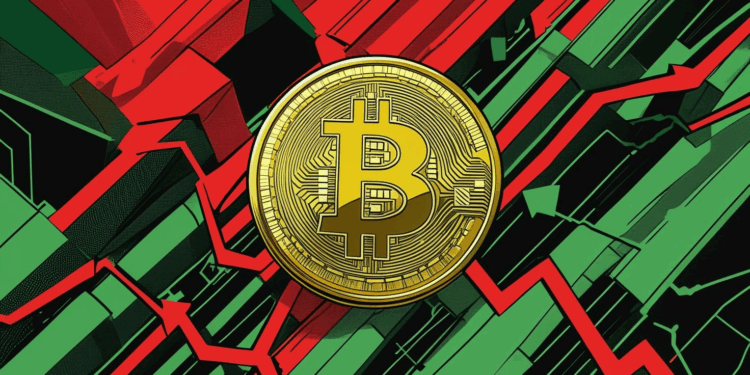- Bitcoin is a decentralized digital currency that operates without banks or governments, offering transparency, security, and a fixed supply of 21 million coins.
- It was created in 2009 by Satoshi Nakamoto in response to the 2008 financial crisis, aiming to empower individuals with a censorship-resistant, programmable form of money.
- Beyond digital payments, Bitcoin serves as a store of value, investment tool, and financial lifeline, especially in regions facing inflation, authoritarianism, or limited banking access.
Bitcoin, the biggest technological disruption in financial history, is revolutionizing the way people store, exchange, and perceive value. More than just digital money, it is the catalyst of a decentralized renaissance, challenging the dominance of centralized institutions and laying the groundwork for a new age of financial sovereignty. So, let us take a closer look at this beast that refuses to play by the old rules.
What Is Bitcoin?
At its core, Bitcoin is a cryptocurrency—a form of money that exists only in the digital realm, governed not by any central authority but by cryptographic principles and a peer-to-peer network. It operates globally, without borders, and enables secure, transparent transactions between individuals directly. No banks. No governments. No gatekeepers.
It is programmable, scarce, secure, and radically transparent. Every transaction, every movement of value, is publicly recorded. Every unit of Bitcoin is accounted for. And there will never be more than 21 million of them. This scarcity, paired with immutability and independence, creates a system that is immune to manipulation by politicians or bankers.
The Origins of Bitcoin
The story of Bitcoin begins in the shadows of the 2008 financial collapse—a moment in history when trust in banks and financial institutions was shredded globally. On October 31, 2008, a mysterious figure or group known only as Satoshi Nakamoto released a whitepaper titled “Bitcoin: A Peer-to-Peer Electronic Cash System.”
This wasn’t just code. It was a manifesto. Nakamoto wanted to create a system where people could transact without relying on corruptible intermediaries. A currency that couldn’t be inflated at the whim of a central bank. A system that would be governed by mathematics, not human greed.
By January 2009, Nakamoto released the first version of the software and mined the Genesis Block, embedding a headline from The Times as a silent indictment of failing banks and bailouts. For nearly two years, Nakamoto corresponded with other developers before disappearing— leaving behind a decentralized ecosystem that no one person could control, manipulate, or shut down.
What Problems Does It Solve?
Bitcoin was built to challenge the foundational flaws of traditional finance and create an open, borderless, and censorship-resistant monetary network. It offers:
Fixed Scarcity
Only 21 million bitcoins will ever exist. This hard cap creates a deflationary model that resists inflation and preserves long-term value—a direct response to fiat currencies being endlessly printed.
Decentralization
No single entity controls Bitcoin. It is maintained by a global network of nodes and miners, ensuring no government, corporation, or central bank can manipulate or shut it down.
Permissionless Access
Anyone with an internet connection can participate. You do not need a bank account, credit score, or identity verification. Bitcoin opens financial inclusion to the unbanked and underbanked worldwide.
Censorship Resistance
Transactions cannot be blocked, reversed, or altered by third parties. Bitcoin gives users full control over their money, even in authoritarian regimes or unstable economies.
Transparency and Immutability
Every transaction is recorded on the blockchain—public, verifiable, and permanent. Once confirmed, it cannot be changed, erased, or manipulated.
Borderless Transactions
Bitcoin ignores geography. You can send or receive value instantly across the world with minimal fees and no need for intermediaries or currency conversion.
Security Through Cryptography
Bitcoin’s protocol relies on advanced cryptographic techniques, making it secure against fraud, counterfeit, or double-spending. Your funds are protected by mathematics, not fallible institutions.
Self-Custody and Ownership
With Bitcoin, you do not just hold money—you own it outright. Through private keys, you control your funds without reliance on banks or third parties.
Bitcoin’s Core Components
Bitcoin is a protocol built on several powerful components that keep it secure, decentralized, and unstoppable. Each piece plays a critical role in the machine that never sleeps. This includes:
1. Blockchain
The blockchain is Bitcoin’s foundation—a decentralized, public ledger that records every transaction ever made. It is a linear chain of blocks, each containing a batch of transactions, cryptographically linked to the previous one. This makes the ledger immutable – once a transaction is confirmed and embedded in a block, it cannot be altered. This is the backbone of trust in Bitcoin—a trust built not on people, but on code and computation.
2. Nodes
Nodes are the heartbeat of the Bitcoin network. These are computers running Bitcoin’s software, maintaining a full copy of the blockchain, validating transactions, and enforcing the rules of the protocol. They do not mine, but they ensure consensus, consistency, and integrity across the network. Anyone can run a node—it is the ultimate expression of decentralization and community governance.
3. Miners and Proof of Work
Bitcoin mining is how new bitcoins are introduced into circulation, but it is also how the network secures itself. Miners compete to solve complex mathematical puzzles in a process called Proof of Work. The winner gets to add a new block to the blockchain and earns a block reward—currently 3.125 BTC. This process makes it computationally expensive to attack the network, giving Bitcoin its legendary security.
4. Private Keys and Wallets
To interact with Bitcoin, users need a wallet—software (or hardware) that manages private keys. These keys are cryptographic signatures that grant control over specific amounts of Bitcoin. If you lose your private key, you lose your Bitcoin. If someone else gets it, they can spend it. No customer service. No recovery. Just absolute control and absolute responsibility.
5. Halving Events
Roughly every four years, the block reward for miners is cut in half—this is called a halving. It is a key part of Bitcoin’s monetary policy, pre-programmed and predictable. Halvings reduce the rate of new supply, increasing scarcity and often triggering massive market interest.
How Does It Work?
Bitcoin operates on a beautiful fusion of cryptography, game theory, and distributed computing. Here is how it flows:
- Initiation – You enter the amount and recipient’s public key in your wallet.
- Digital Signature – Your private key signs the transaction.
- Broadcast – The transaction hits the network.
- Verification – Miners validate the transaction by solving a cryptographic puzzle.
- Inclusion in a Block – Once verified, it is grouped with others and added to the blockchain.
- Confirmation – The block gets confirmed and the transaction becomes immutable.
Each step is designed to be secure, transparent, and resistant to tampering—without requiring trust in any single party.
Utility and Offerings
Bitcoin serves multiple roles depending on context, geography, and user needs. This includes:
Digital Payments
Merchants ranging from local vendors to multinational retailers accept Bitcoin. Paired with services like BitPay, it enables fast, secure payments without involving banks or credit cards. This peer-to-peer method allows global commerce with minimal friction, especially useful in regions with poor banking infrastructure.
Store of Value
Often referred to as “digital gold,” Bitcoin is increasingly used to preserve wealth over time. Its fixed supply and immunity to inflationary policies make it a safe haven during periods of economic instability or currency devaluation, particularly in countries with weak financial systems.
Investment Vehicle
Bitcoin is now a major player in global investment portfolios. Institutions and individuals gain exposure through direct holdings, ETFs, and derivatives. Its volatility attracts traders, while long-term investors see it as a non-correlated asset with strong upside potential amid traditional market uncertainty.
Remittances
Bitcoin simplifies international money transfers by removing banks and third-party processors. With a smartphone and internet connection, people can send funds across borders in minutes. This is a game-changer for migrant workers and families who depend on fast, affordable remittance flows.
Financial Lifeline
In oppressive regimes or collapsing economies, Bitcoin provides a secure way to escape financial censorship. People use it to preserve capital, transact freely, and store value beyond the reach of freezing orders, confiscation, or hyperinflation—making it a tool for survival and independence.
Milestones and Achievements
Bitcoin’s journey from a cypherpunk experiment to a trillion-dollar asset class has been marked by major breakthroughs. Key highlights include:
- 2008 — Bitcoin whitepaper released by Satoshi Nakamoto, introducing a new peer-to-peer digital cash system.
- 2009 — Genesis Block mined, launching the Bitcoin network and starting decentralized digital currency history.
- 2010 — First real-world transaction: 10,000 BTC paid for two pizzas, proving Bitcoin’s practical value.
- 2013 — Bitcoin surpassed $1,000, gaining mainstream attention as more than a niche digital experiment.
- 2017 — Price neared $20,000 amid network congestion, sparking debates and leading to scaling solutions.
- 2020–2021 — Institutional adoption surged with companies buying Bitcoin and financial firms launching Bitcoin products.
- 2021 — El Salvador adopted Bitcoin as legal tender, marking the first national integration of cryptocurrency.
- 2024 — U.S. approved spot Bitcoin ETFs, opening Bitcoin investments to traditional and regulated markets.
- 2024 — Bitcoin’s price crossed $100,000, confirming its significance in global finance and investment.
- 2025 — Nations and corporations began holding Bitcoin as strategic reserves amid economic and geopolitical uncertainty.
Final Thoughts
In conclusion, Bitcoin rewrites the rules of money by putting control back into the hands of individuals. It is a bold experiment that has evolved into a powerful force challenging traditional financial power structures. And its true impact is still unfolding, promising to reshape how we think about value and sovereignty forever.














